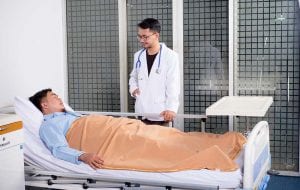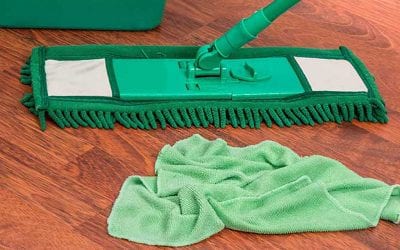Medical emergencies are difficult to deal with at home. They are even more difficult in a foreign nation where you are unfamiliar with the medical system and the local language.
 Medical emergencies are hard on international travelers.
Medical emergencies are hard on international travelers.
Several years ago, we were flying into Lima, Peru. With about 30 minutes left in our flight, I started to get chest pains. The captain got permission to land immediately and had an ambulance meet me at the gate. I was taken to the hospital, and a fluent Spanish flight attendant volunteered to accompany my wife and me. Thankfully, it wasn’t a heart attack, and a few days later, I was able to resume the trip.
My experience with medical emergencies taught me a lot about handling them when traveling internationally. Here are my sixteen international medical emergency tips.
Having the right medical insurance for international travel is essential.
Medical insurance:
Be certain your medical insurance has international coverage. If it does, make sure its coverage is adequate and what you’ll need to put in a claim. Many policies pay little or nothing outside your coverage area. If you’re a U.S. senior, Medicare won’t cover you internationally. I never travel internationally without purchasing travel medical insurance that includes pre-existing condition coverage. Have all your policy information while traveling, including policy numbers and contact information.
Medical evacuation coverage:
Make sure your health insurance has medical evacuation coverage. If not, buy a policy that does. If you are afflicted with a long-term illness or in a location with inadequate medical facilities abroad, you’re going to want to come home for treatment. Medical evacuations are expensive, as they generally require a special plane with at least one medical professional to take care of you. Without insurance to pay for it, most people can’t afford the service.
Use a medical ID, particularly if you have a preexisting condition.
Passport:
Fully complete the information page inside your passport in case of emergency. It will help to facilitate your identification in case of an accident. I keep a type-written sheet inside my passport with all my personal contact information and all of my emergency contacts, personal and medical.
Medical ID:
Particularly if you have a pre-existing medical condition, such as a heart condition, allergy, etc., a medical ID can be a lifesaver, mainly if you’re found unconscious. I highly recommend becoming a member of the Medic Alert Foundation. I’ve worn their medical ID for more than 50 years. Medical personnel across the globe are trained to look for such IDs. I keep a full medical profile at Medic Alert. They have operators available 24/7 to give emergency medical and professional medical personnel all of their medical and emergency contact information for each member.
Have your medical history available during your international journeys.

Carry a detailed medical history, particularly if you have a pre-existing medical condition. It can be a printout or an electronic copy. I keep my detailed medical history in the Health app on my iPhone. It lists my medical conditions, surgeries, disease history, immunizations, allergies, medications, and personal and medical contacts. The information is accessible from the iPhone’s lock screen without using a passcode. There are similar apps available for Android phones.
Medical information backup:
In case of losing my phone, all my medical and contact information is in a secure file on “the cloud.” I suggest that every international traveler secure their medical history and other essential information on the cloud for global access.
Pre-existing condition information:
For those with pre-existing medical conditions, carry a written or digitized letter from your primary and specialist healthcare providers describing the conditions and any prescription medicines (patent and generic names) you are taking.
U.S. State Department Smart Traveler Enrollment Program (STEP):
U.S. nationals should enroll in the STEP program. Through STEP, you can monitor travel advisories and ensure that the State Department knows where you are if you have serious legal, medical, or financial problems while traveling. In an emergency at home, STEP can help friends and family contact you.
Locate potential healthcare facilities and providers at your destination(s) for medical emergencies.
Destination research:
Particularly if you have a pre-existing condition or are a senior, you should research potential healthcare providers at your destination(s). The International Association for Medical Assistance to Travelers’ resource center may be helpful in your research. Your local embassy and consulate at your destination(s) can be extremely helpful.
List of medical facilities and physicians:
Bring a list of any medical facility and professionals at your destination(s) that you’ve identified in advance of your journey with their addresses and phone numbers to be able to contact them in case of an emergency quickly.
Check with the U.S. State Department, CDC and WHO:
Before traveling, visit the CDC (Centers for Disease Control and Prevention) web pages about travelers’ health. Review all the health advisories and information for your destination countries, such as Zika, malaria or Ebola outbreaks, etc. They will also have a list of recommended and mandatory vaccines to get before your trip departure.
At the U.S. State Department, go to their country information and carefully review your international destinations. The State Department has detailed information about health at countries around the world.
Bring your medications in their original containers with full labeling. Be sure none are illegal at your destination(s).
Prescription medications you already take regularly and as needed:
Bring any prescription medicines outside your home country in labeled original containers. Some available medicines in your home nation may be illegal in other countries. Before bringing any medications with you on an international journey, ensure they’re permitted at your destination(s). You may want to check with the foreign embassy of the country you plan to visit to be sure.
Over-the-counter medications you already take:
Just like prescription medications, make sure that any medications you plan to bring on your trip are legal at your destination(s) and in their clearly labeled original containers.
Travel medications:
Before leaving, contact your primary physician and discuss the trip with them. Ask your primary physician to write prescriptions for typical diseases that you might encounter on your journey, such as diarrhea, norovirus, or severe infections, as well as COVID. I bring prescription medications with me for a variety of illnesses that I might encounter. Finding necessary medication at your destinations may be difficult and sometimes impossible.
Even if you’re fluent in the language of your destination, have a translator at medical facilities to ensure all medical information is translated accurately.
Translator:
Even if you’re fluent in the language of your destination(s), you might want to have a translator with complete knowledge of medical nomenclature so they can help you if you have to have medical tests and treatment. The translator I had at the hospital in Lima was essential. The concierge at your hotel could be very helpful in finding a solid translator. Your local embassy or consulate should be able to help you obtain a translator, too.
Money:
If necessary, local embassies and consulates can assist travelers in transferring money from family or friends to pay hospitals and other medical bills that are the responsibility of the traveler.

READ ALSO:
Most free airline stopovers are a thing of the past…. But not all
Stupid travel mistakes and how to avoid them
After many years working in corporate America as a chemical engineer, executive and eventually CFO of a multinational manufacturer, Ned founded a tech consulting company and later restarted NSL Photography, his photography business. Before entering the corporate world, Ned worked as a Public Health Engineer for the Philadelphia Department of Public Health. As a well known corporate, travel and wildlife photographer, Ned travels the world writing about travel and photography, as well as running photography workshops, seminars and photowalks. Visit Ned’s Photography Blog and Galleries.



